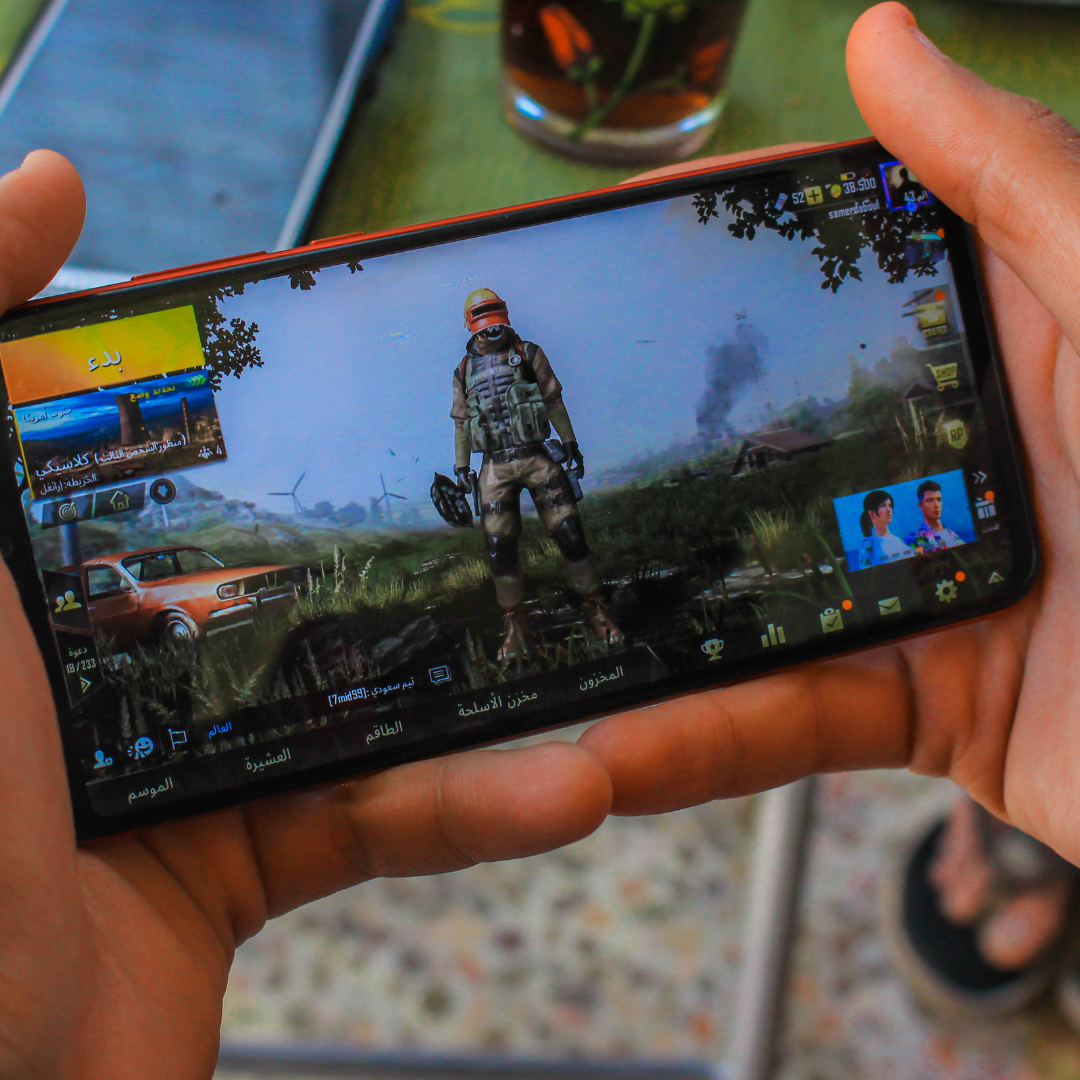Mobile games and console games each offer unique experiences that cater to different types of gamers. As technology advances, the debate about which platform provides a superior gaming experience intensifies. Mobile games offer accessibility and convenience, while console games typically deliver more immersive graphics and gameplay.
Many players appreciate the flexibility of mobile gaming, which allows for gaming on the go. In contrast, console games often require a dedicated space and offer a more involved gaming experience, often accompanied by larger screen sizes and better sound quality. Each platform appeals to different preferences and lifestyles, making the choice between them significant for individual gamers.
Understanding the strengths and weaknesses of both mobile and console games can help gamers make informed decisions. This comparison will explore various aspects such as gameplay, graphics, and community engagement, allowing players to determine which platform aligns best with their gaming preferences.
Evolution of Gaming Platforms
The evolution of gaming platforms reflects significant technological advancements and shifts in consumer preferences. Mobile gaming has transformed dramatically since its inception, while console gaming has seen the rise and fall of various systems.
History of Mobile Gaming
Mobile gaming began with simple games like Snake on early mobile phones in the late 1990s. With the introduction of smartphones, particularly the iPhone in 2007, mobile gaming exploded. Developers quickly recognized the potential, utilizing touchscreens and accelerometers to create engaging experiences.
Key milestones include the launch of app stores, which revolutionized game distribution. Notable titles such as Angry Birds and Candy Crush popularised mobile gaming further. The rise of 5G networks has enhanced mobile gaming, reducing latency and allowing for richer, more complex games. Today’s mobile gaming market continues to thrive, supported by a diverse range of genres and monetization strategies.
History of Console Gaming
Console gaming dates back to the 1970s with systems like the Magnavox Odyssey. The introduction of cartridges allowed for expanded gameplay experiences. Major players like Atari and Nintendo revolutionized the industry with iconic consoles and franchises.
The 1990s marked the arrival of 3D graphics and CD-ROM technology with the Sony PlayStation. Subsequent generations saw the battle between Sony, Microsoft, and Nintendo, each introducing innovative features like online multiplayer and motion controls. Today, consoles provide powerful hardware, exclusive titles, and advanced online services, appealing to a dedicated audience. The evolution continues, with cloud gaming and virtual reality emerging as the next frontiers, reshaping how players engage with console games.
Technological Innovations
In recent years, significant advancements in mobile technology and next-generation console features have transformed the gaming landscape. These developments have enhanced the performance, gameplay experience, and accessibility for players.
Advancements in Mobile Technology
Mobile gaming has seen remarkable progress due to advancements in hardware and software. Modern smartphones are equipped with powerful processors, such as Apple’s A-series chips and Qualcomm’s Snapdragon series, allowing for console-quality graphics and complex gameplay.
Key Features in Mobile Gaming:
- High-resolution Displays: Many devices now feature OLED screens with high refresh rates, improving visual clarity.
- Touch Control Enhancements: Developers implement intuitive touch controls, making games more engaging and accessible.
- Cloud Gaming Support: Technologies like cloud gaming enable players to stream high-quality games directly to their devices without needing high-end hardware.
This integration of technology has resulted in a more immersive and flexible gaming experience for users.
Next-Generation Console Features
The latest consoles, such as the PlayStation 5 and Xbox Series X, offer cutting-edge technology that pushes the boundaries of gaming. These systems boast powerful graphics, faster load times, and improved online connectivity.
Notable Innovations:
- Solid-State Drives (SSDs): These allow for near-instantaneous loading times, enhancing user experience.
- Ray Tracing: Improved light rendering creates more realistic environments.
- Enhanced Online Functionality: Features like cross-platform play and cloud saves expand social gaming opportunities and accessibility.
These advancements solidify consoles as a powerhouse in the gaming industry, making them a pivotal choice for dedicated gamers.
Market Trends and Demographics
The landscape of gaming is significantly shaped by distinct market trends and demographic preferences in mobile and console gaming. Each segment exhibits unique patterns in consumer behavior and financial growth that reflect broader technological and social changes.
Mobile Gaming Market Analysis
The mobile gaming market has experienced rapid growth, largely driven by the accessibility of smartphones. In 2024, mobile gaming revenue was projected to surpass £100 billion globally. This surge is attributed to increasing smartphone penetration and a diverse game library.
Demographics reveal that mobile gamers are not confined to a specific age group. Research indicates that approximately 55% of mobile gamers are aged between 18 and 34. Women account for nearly half of the mobile gaming audience, illustrating a shift from traditional gaming demographics. The free-to-play model dominates, making games like “Candy Crush Saga” and “PUBG Mobile” immensely popular. In-game purchases and advertisements contribute significantly to revenues.
Console Gaming Market Analysis
Console gaming remains a robust segment with dedicated consumer loyalty. In 2024, console sales reached about £25 billion, driven by popular titles and innovative hardware like the PlayStation 5 and Xbox Series X.
Consoles have a distinct demographic, often appealing to gamers aged 18 to 44. Men typically represent around 60% of this audience, yet there is a growing interest among women, who now account for about 40% of console players.
Physical game sales have declined, with digital downloads rising sharply, reflecting changing preferences in how games are consumed. AAA titles dominate the market, creating significant competition and a focus on high-quality experiences.
Accessibility and Portability
Mobile games and handheld consoles present unique advantages in accessibility and portability. Understanding these aspects can help gamers choose which platform fits their lifestyle and gaming preferences best.
Convenience of Mobile Games
Mobile games are easily accessible. They can be played on smartphones or tablets, devices that most people carry daily. Users can download games from app stores, often at low or no cost, making entry into gaming simple.
The touch controls and intuitive interfaces allow players to quickly learn and start playing. Additionally, games can be played in short bursts, accommodating busy schedules. The instant availability on personal devices means there’s little barrier to engagement, contributing to a vast audience.
Portability of Handheld Consoles
Handheld consoles, like the Nintendo Switch, offer dedicated gaming experiences in a portable format. They provide the advantage of hardware specifically designed for gaming, resulting in superior performance compared to mobile devices.
These consoles usually feature physical controls, which enhance gameplay for certain genres. While they are larger than a smartphone, they remain lightweight and easy to transport. Gamers can enjoy extensive titles without being tethered to a television.
Their battery life and offline gaming capabilities make them suitable for travel, allowing sustained gaming sessions without needing internet access. This combination of features showcases the portability of handheld consoles for dedicated gaming experiences.
Gameplay Experience
The gameplay experience on mobile and console platforms differs significantly, each offering unique features that appeal to various types of gamers. This section examines the interface and controls in mobile gaming versus the immersive experience provided by consoles.
Mobile Gaming Interface and Controls
Mobile games typically utilize touchscreens for navigation and control, which can be both intuitive and limiting. Many games use simple tap, swipe, and pinch gestures that cater to casual players.
Pros:
- Accessibility: Quick to learn and engage with.
- Variety: A wide range of genres available.
Cons:
- Precision: Touch controls can lack accuracy, especially in fast-paced games.
- Fatigue: Prolonged gameplay can lead to discomfort in hands.
Additionally, many titles incorporate virtual buttons overlaying the game screen, which may not always respond as reliably as physical buttons. This can detract from the immersion, particularly in competitive or intricate gameplay scenarios.
Console Gaming Experience
Console gaming often prioritizes a more immersive experience, featuring dedicated controllers that provide tactile feedback and precise control. Controllers generally include joysticks, triggers, and buttons designed for comfort during extended play sessions.
Advantages:
- Precision: Analog sticks and buttons allow for accurate movements, crucial in fast-paced and competitive environments.
- Comfort: Ergonomic design supports longer gameplay without discomfort.
The greater graphics and processing power available on consoles can enhance the visual and auditory experience, making the game world more engaging. Titles also tend to feature more in-depth narratives and complex mechanics, facilitating richer experiences that can be played in longer sessions.
In conclusion, both mobile and console gaming deliver distinct gameplay experiences that cater to different types of players.
Business Models and Monetisation
The monetization strategies in mobile and console gaming differ significantly, influencing player experiences and developer revenues. Mobile games primarily rely on various revenue streams, while console games incorporate different sales and subscription models.
Mobile Gaming Revenue Streams
Mobile games often utilize a mix of monetization methods, including:
- Freemium Model: Many mobile games are free to download, generating revenue through in-app purchases. Players can buy virtual goods, extra lives, or premium features.
- Advertisements: Ad-based models allow developers to offer free content while displaying ads. Users might encounter banners, interstitial ads, or rewarded videos.
- Subscription services: Some mobile games offer premium subscriptions providing exclusive content or ad-free experiences.
This diverse approach enables developers to cater to various player preferences and ensure ongoing engagement, ultimately maximizing revenue opportunities.
Console Game Sales and Subscriptions
Console games typically operate on more traditional sales models:
- Physical and Digital Sales: Gamers purchase titles outright, either as physical copies or digitally. Prices can vary significantly based on release timing and popularity.
- Season Passes and DLC: Developers often release downloadable content (DLC), allowing players to enhance their experience. Season passes provide ongoing access to new content over time.
- Subscription Services: Platforms like Xbox Game Pass and PlayStation Plus offer monthly subscriptions. These services grant subscribers access to a library of games, ensuring a steady revenue stream.
These models cater to a more dedicated audience, facilitating sustained engagement and higher revenue potential for developers.
Cultural Impact and Social Interaction
Mobile and console gaming each foster unique community dynamics and social interactions. These platforms shape how players engage with each other, creating distinct cultural impacts.
Community Engagement in Mobile Gaming
Mobile games often feature integrated social media functions, allowing players to share achievements and experiences instantly. This accessibility fosters a sense of community among players from diverse backgrounds. Games like Candy Crush or Among Us encourage players to invite friends and share progress, enhancing engagement.
Furthermore, mobile platforms cater to casual gamers, leading to more frequent, brief interactions. Players can join communities through apps like Discord or dedicated forums, making connections beyond gameplay. The ease of access on mobile devices also allows for spontaneous gaming sessions, promoting social interaction in various environments, from public transport to cafes.
Multiplayer and Social Features in Console Gaming
Console gaming has long offered rich multiplayer experiences, often through local co-op or online matchmaking. Exclusive titles like Call of Duty or FIFA emphasize teamwork and competitive play, which can strengthen friendships. Dedicated online services such as PlayStation Network and Xbox Live provide structured environments for social interaction. Players can form guilds, participate in events, and communicate via voice chat, deepening connections.
Moreover, console gaming’s immersive experiences and high-quality graphics create a shared sense of achievement. Events like tournaments draw large audiences, further solidifying gaming as a cultural touchstone. The community formed around console games can be robust, with fandoms generating content that enhances engagement and interaction.
Future Outlook
The landscape for mobile and console gaming is evolving rapidly. Various technological advancements and consumer behaviors will shape the future of both platforms significantly.
Predictions for Mobile Gaming
Mobile gaming is expected to continue its impressive growth trajectory. As smartphone technology improves, graphics quality and processing power will rival those of traditional consoles. Cloud gaming will also become more prevalent, allowing players to stream high-quality games without significant hardware. This shift could attract more players seeking flexibility and convenience.
Additionally, the rise of augmented reality (AR) experiences will enhance gameplay. Games like Pokémon GO have already showcased the potential for AR. Expect more titles to incorporate this feature, merging digital and physical worlds. Monetization strategies will diversify. The focus will shift from in-app purchases to subscription models, making games accessible to wider audiences.
Predictions for Console Gaming
Console gaming will adapt to remain competitive amidst the rise of mobile platforms. Next-generation consoles are integrating advanced technology such as virtual reality (VR) and improved online features. Expect increased focus on exclusive titles. Major developers are likely to release high-quality games that can only be accessed on specific consoles, drawing dedicated gaming communities.
Subscription services will also play a larger role. This model allows players to access a library of games for a flat fee, transforming how players engage with console gaming. Furthermore, the integration of cloud gaming will be crucial. Players will desire the flexibility to play across devices, whether on their console or mobile, making cross-platform play a priority for developers.
Conclusion
The comparison between mobile games and console games highlights distinct characteristics and preferences. Each platform has its strengths, catering to different types of gamers.
Mobile Games:
- Accessibility: Users can play anywhere, anytime.
- Cost-Effective: Many games are free or low-cost.
- Social Features: Easy to connect with friends.
Console Games:
- Graphics Quality: Typically offer superior visual experiences.
- Extended Gameplay: Often has more complex narratives and mechanics.
- Physical Control: Many players prefer traditional controllers.
Players may choose one platform over the other depending on their lifestyle and gaming preferences. Mobile games facilitate quick, casual play; console games tend to favor deeper engagement.
Ultimately, both mobile and console gaming contribute significantly to the industry, appealing to a broad audience.





Leave a Reply